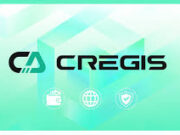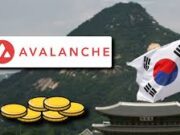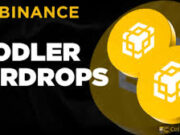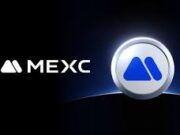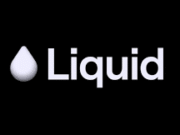In recent months, Tether widely known for its USDT stablecoin — has embarked on an ambitious journey far from its crypto origins. Instead of just backing digital dollars, the company is aggressively building up physical gold reserves. The latest reports suggest Tether is adding over one ton of gold every week, pushing its total holdings to a jaw-dropping US$12.9 billion. This isn’t just portfolio diversification. It could reshape the way we think about digital assets, reserves, and stability.
A Snapshot of the Numbers
Let’s break down what the data shows:
- Gold holdings: As of September 2025, Tether’s bullion reserves were valued at US$12.9 billion, equivalent to roughly 104 metric tonnes of physical gold. (Blockchain News)
- Weekly accumulation: That works out to more than one tonne per week on average over the past year. (Gate.com)
- Reserve diversification: Gold now makes up about 7% of Tether’s broader reserves, which reportedly exceed US$180 billion. (Sahm)
- Tokenized gold: Through its XAU₮ (also written XAUT) product, Tether backs each token 1:1 with a troy ounce of fine gold. (Tether)
- Physical performance: According to Tether’s Q1 2025 attestation, its custodian holds over 246,000 fine troy ounces of gold, matched by the same number of XAU₮ tokens in circulation. (Tether)
Building a Full-Stack Gold Empire
What sets Tether’s strategy apart isn’t just how much gold it’s buying — it’s how deeply it’s embedding itself into the gold value chain.
- Mining and royalty exposure
Tether has held talks with mining companies and royalty firms to gain exposure upstream. (Financial Times)
According to multiple sources, it even participated in a deal around Elemental Altus, a gold royalty company. (Financial Times)
By acquiring rights, Tether could move from being a passive holder to becoming a structural player in gold production. - Top-tier talent
In November 2025, Tether poached two heavyweights from HSBC’s precious metals desk: Vincent Domien (former global head of metals trading) and Mathew O’Neill (EMEA origination). (Coin Edition)
These hires clearly signal that Tether wants more than just storage — it wants to trade, originate, and structure bullion deals with institutional polish. - Secure vaulting
Tether isn’t relying solely on third-party vaults like many central banks do (e.g., Bank of England, New York Fed). Instead, it’s building its own vault infrastructure. (Coinlive)
According to its CEO Paolo Ardoino, one such facility is in Switzerland, designed to meet “world’s most secure” standards. (Gate.com)
There’s also talk of expanding to Singapore, especially for Asia-facing reserves. (Coinlive)
Why This Shift Gains So Much Attention
This dramatic pivot from “just stablecoins” to a gold-centric reserves strategy matters for several reasons:
1. Rewriting the Playbook on Stablecoin Backing
Tether’s gold accumulation challenges conventional thinking about what backs a stablecoin. Instead of purely cash or Treasuries, Tether is anchoring parts of its reserves in a physical, historically trusted asset. This could help stabilize USDT in times of fiat volatility, acting as a kind of “real-world reserve hedge.”
2. Institutional-Grade Gold Exposure
By hiring senior precious metals traders and building a vertically integrated gold operation, Tether is moving into the kind of capital markets territory typically reserved for central banks, large wealth funds, or major commodity firms. That signals confidence and ambition — not just for its stablecoins, but for Tether as a full-fledged financial player.
3. Tokenized Gold Gets Legitimacy
XAU₮ is no side project. With over 7.7 tons of gold backing (per the Q1 2025 attestation) (Tether), its growth demonstrates real demand for digital, gold-backed tokens. As more investors look for inflation hedges, tokenized gold is gaining traction — and Tether is making sure it’s firmly in that game.
4. Boosting Crypto’s Role in the Global Gold Rush
Analysts argue that Tether’s gold buying could be part of a broader “crypto-driven gold rush.” (Sahm) Because Tether has deep liquidity and balance sheet strength, its strategic gold accumulation could attract more capital into the intersection of crypto and real-world assets.
Challenges & Risks Along the Way
There are, of course, important caveats and risks in what Tether is building:
- Regulatory scrutiny: A crypto company entering the gold mining trade raises eyebrows among traditional gold miners and regulators. (Financial Times)
- Operational risk: Managing vaults, logistics, and third-party custodians is a very different business than issuing stablecoins. Mistakes or security lapses could be costly.
- Liquidity trade-offs: While gold is a store of value, it’s less liquid than cash or Treasuries. If Tether ties up too much in gold, that could constrain its ability to meet redemption pressure.
- Market risk: Gold isn’t immune to price swings. A prolonged drop in gold prices could impact the value of its reserve portfolio.
- Trust and transparency: For such a high-stakes strategy, market participants will want rigorous auditing and attestation. Tether’s Q2 2025 attestation underscores some of this, but long-term trust will depend on continued openness. (Tether)
Broader Implications for Crypto and Finance
Tether’s strategy might reshape more than its own balance sheet. Here are some broader ripple effects:
- Real-world assets (RWAs) go mainstream: Tether’s gold push could help validate tokenized real-world assets (RWAs) in the broader crypto economy. As it proves the model can scale, other crypto firms may follow suit.
- Stablecoins rethink backing models: Other stablecoin issuers may explore similar strategies — building tangible reserves rather than relying solely on financial instruments.
- Gold market disruption: A crypto-native buyer with deep pockets could influence traditional gold markets. If Tether continues to accumulate at this pace, it may alter supply-demand dynamics, especially among central banks and major institutional players.
- Strategic diversification: For Tether, this isn’t just about gold — it’s a way to diversify profits generated from its core business (USDT issuance) and build a long-term store of value.
Conclusion
Tether’s gold accumulation isn’t a passive bet: it’s an active, structural play. By adding more than a ton each week to its reserves, recruiting top precious metals talent, and building its own global vault footprint, Tether is turning its reserves business into something far more powerful than a stablecoin backstop.
This strategy blends centuries-old value (gold) with modern finance (tokenization), and it positions Tether at the forefront of what could be a new paradigm: a digital-asset company that thinks like a central bank — but without borders.
As this gold strategy develops, the rest of the industry will be watching closely. Will Tether’s vision continue to scale? Will it truly reshape the intersection of crypto, reserves, and real-world commodities? Only time will tell. But for now, one thing’s clear: we’re witnessing a bold reimagining of what a reserves-backed digital company can be.
Sources:
- Analyst commentary on Tether as a top gold buyer: (Sahm)
- Tether’s hiring of HSBC precious metals traders: (Coin Edition)
- Tether’s Q1 2025 attestation (gold reserves, token backing): (Tether)
- Details about physical vaults and self-custody: (Gate.com)
- Tether’s total reserve assets and gold percentage: (Blockchain News)
- Auditor report for gold holdings (Q2 attestation): (Tether)



